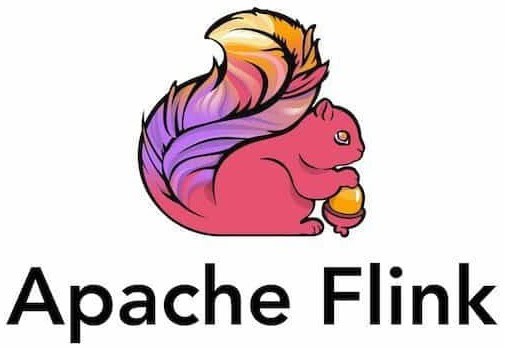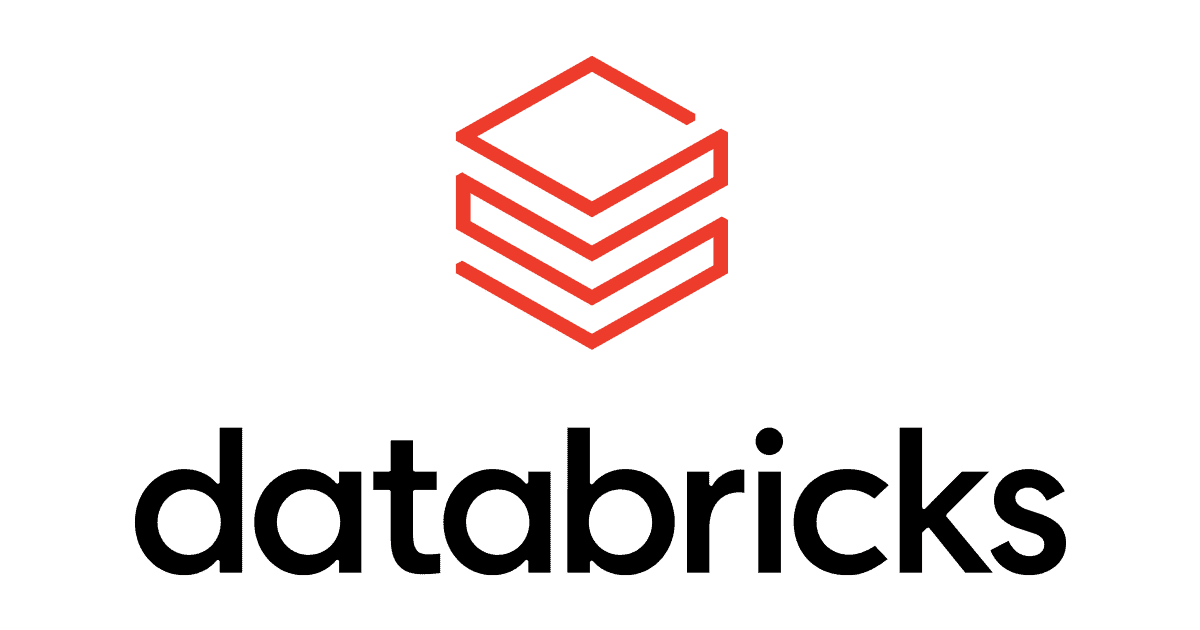Key Highlights
- The rise of big data necessitates effective tools for harnessing its potential.
- Leveraging these tools empowers businesses to gain valuable insights from vast amounts of data.
- Various big data tools specialize in data processing, analysis, storage, and visualization.
- This article will explore 10 essential big data tools, providing insights into their functionalities and use cases.
- Selecting the appropriate tools is crucial for organizations aiming to optimize their data strategies.
Table of Contents
ToggleIntroduction
In today’s fast-changing tech world, big data is a major change for businesses everywhere. Companies have a lot of data to look at, and it is very important to pick out useful insights from it. Data analytics tools help businesses handle and understand this data well. This helps them improve their business intelligence. By spotting patterns, trends, and connections in their data, businesses can make smart choices and stay ahead of the competition.

10 Key Big Data Tools to Elevate Your Data Handling in 2025
The world of big data has many tools, each designed for different parts of data management and study. Choosing the right tool for what your organization needs is important. This article looks at 10 important big data tools that help with different types of data processing, like data storage and useful data visualization.
These tools show the wide range of big data technologies available. Whether you need real-time analytics, machine learning, or just want to handle large amounts of data, this list can help you start exploring the tools that can change how your organization does data analytics in 2023. Let’s take a look!

1. Apache Hadoop: Unleashing the Power of Big Data Processing
Apache Hadoop is an open-source framework that plays a key role in big data processing. It offers great storage and processing features, making it a go-to option for dealing with large datasets. Hadoop can share data and tasks across many less expensive computers. This helps businesses increase their data processing power effectively.
One major benefit of Hadoop is its fault tolerance. This means it can keep data safe even if some hardware fails. It does this by copying data to multiple locations. This feature is essential for businesses that rely on important data and want to ensure safety.
Additionally, Hadoop is open-source, which has created a strong community and many tools for its users. This variety allows businesses to pick the right tools and connect them with their systems easily, promoting a successful big data environment.

2. Apache Spark: Accelerating Large-Scale Data Analysis
Apache Spark is an open-source tool that helps speed up data analysis for large datasets. It is built to work fast and efficiently. This means Spark works better than old batch processing systems. This makes it a great choice for businesses that deal with time-sensitive data.
One of Spark’s key features is its ability to process data in real-time. This is important for companies that need quick insights. With real-time processing, businesses can look at data as it comes in. This leads to fast decision-making.
Spark is also very flexible. It can handle both batch processing and stream processing. It can do everything from interactive queries to machine learning tasks. This lets businesses meet their data processing needs better, all in one easy-to-use tool.

3. Elasticsearch: Real-Time Search and Analytics Engine
Elasticsearch is an open-source search and analytics tool. It helps businesses find valuable insights in unstructured data. Its ability to take in and process data from different sources in real-time makes it crucial for companies that handle fast-changing data.
Elasticsearch is a main part of the Elastic Stack. It works well with other data analytics tools like Kibana for data visualization and Logstash for data ingestion. Together, these tools help businesses create detailed data analysis pipelines to fit their needs.
Elasticsearch can grow to handle huge amounts of data without slowing down. This ability to hold, search, and analyze large datasets makes Elasticsearch a top choice for organizations that want to use their data to improve business intelligence.

4. Apache Flink: Stream Processing for Real Time and Beyond
Apache Flink is an open-source tool for stream processing. It is great at handling continuous data streams in real time. This feature makes it perfect for organizations that deal with data that needs quick attention. Flink can process large datasets quickly and efficiently, making it suitable for many kinds of business uses.
Flink can also perform stateful computations. This allows businesses to keep track of and manage their data over time. It helps in processing complex events and making decisions in real time. This is very helpful for industries like finance, telecommunications, and e-commerce, where getting real-time insights matters a lot.
In addition, Flink is reliable because of its fault tolerance and scalability. Businesses can trust Flink to manage rising data amounts and keep data consistent. It can handle challenges even during system failures, providing the stability needed for important business tasks.

5. Apache Storm: The Backbone of Real-Time Analytics
Apache Storm is an open-source system that helps businesses process data in real time. It is a top choice for companies that want to use real-time data insights to make decisions. Storm can handle large amounts of data quickly, making it perfect for building big data analytics applications.
The best part of Storm is its ability to work with data streams right as they come in. This provides real-time insights so organizations can quickly respond to changes. Its design also makes sure that data stays reliable. If there are any problems with a node, Storm can reroute commands, making it a safe option for important applications.
Additionally, Storm works well with other big data technologies like Hadoop and Kafka. This feature increases its flexibility and lets companies use their current data systems. This easy connection makes Storm a great addition to anyone’s data analytics tools.

6. MongoDB: Flexible, Scalable Document Database for Big Data
MongoDB is a document-oriented NoSQL database. It has become popular because it is flexible, scalable, and performs well with big data. Unlike regular relational databases, MongoDB saves data in JSON-like documents. This makes it perfect for managing unstructured and semi-structured data that often comes up in big data projects.
MongoDB allows developers to change data structures easily without needing migrations. This makes development simpler and quicker. This flexibility is important in fast-changing settings where data structures change often, making it easy to keep up.
Moreover, MongoDB can handle more data and user traffic by spreading data across different servers. Its ability to scale horizontally helps businesses grow their data needs smoothly. Along with its reliable availability features, MongoDB is a good choice for companies that want to expand their data systems effectively.

7. Apache Cassandra: High Availability Without Compromising Performance
Apache Cassandra is a NoSQL database known for being very scalable and distributed. It offers high availability and is great at handling faults. This makes it a top choice for apps needing constant data availability. Its decentralized setup means there is no single point of failure. The system can keep running even if some nodes are down.
Cassandra is different from traditional relational databases. It focuses more on write speed and availability, which makes it great for applications that need quick data writes and high uptime. It can manage large amounts of data across different data centers without slowing down. This is why many businesses with large, spread-out systems choose it.
Cassandra also has a flexible data model. It allows for changes in the structure without needing expensive data moves. This flexibility, along with its strong ability to resist faults, makes Cassandra a dependable choice for critical applications where downtime must be avoided.

8. Tableau: Transforming Big Data into Actionable Insights
Tableau is a top data visualization tool. It allows users to easily create interactive dashboards and reports from raw data. This tool helps bridge the gap between data and understanding. It helps businesses make smart business decisions using insights from data.
Tableau has a simple drag-and-drop interface. It offers a wide range of visualizations that make data exploration easy for everyone. Because it is so user-friendly, business users can work directly with data. They can find hidden patterns, trends, and outliers without needing much help from IT teams.
Tableau works well with different data sources, including spreadsheets, databases, and cloud services. This feature makes it a helpful tool for businesses, no matter their size. It also has great collaboration features, allowing teams to share insights and work together on data analysis projects.

9. Google BigQuery: Fully-Managed Enterprise Data Warehouse
Google BigQuery is a managed, serverless data warehouse. It helps businesses analyze large amounts of data quickly and with ease. There is no need for managing servers, so companies can focus on understanding their data instead.
BigQuery can handle petabytes of data and run queries in just seconds. This makes it strong for making decisions based on data. Its design ensures that data is always available and reliable, which is very important for businesses that depend on data for their work.
Additionally, BigQuery works well with other Google Cloud Platform services like Google Cloud Storage and Dataflow. This makes it easy to get data in and process it, creating a strong and seamless way to do data analytics.

10. Databricks: Unified Analytics Platform for Massive Scale Data Engineering
Databricks is a data and AI platform that helps organizations with data engineering, machine learning, and business analytics on a large scale. It is built using Apache Spark, which creates a workspace for data scientists, engineers, and analysts to collaborate. This teamwork helps boost new ideas and speeds up the process of turning data into useful insights.
Databricks is great at managing huge datasets and running tough calculations quickly. This makes it a good choice for companies facing big data problems. It offers managed infrastructure, taking away the need to handle cluster management. This lets teams concentrate on building and launching data-driven solutions faster.
In addition, Databricks connects easily with well-known machine learning libraries and frameworks like TensorFlow, PyTorch, and Scikit-learn. This makes it easier for companies to develop and use machine learning models. With this ability, businesses can create and implement AI solutions that make good use of their data and increase their value.
Unlocking the Potential of Big Data Tools
Navigating big data can seem hard, but each tool has its strengths. To use big data well, you first need to know what your organization specifically needs. Do you want to improve customer relationships, make supply chains better, or customize marketing campaigns? Knowing your goals will help you choose the right tool.
Once you understand your aims, look into the features of different tools. Think about how they can grow with you, how easy they are to use, if they can work with your current systems, and how much they cost. Keep in mind that choosing the right big data tools can give you valuable insights, improve operations, and spark new ideas, leading to great benefits.
Optimizing Data Processing with Apache Hadoop
Apache Hadoop is great at managing large data volumes. It works by spreading data and processing jobs across a group of inexpensive computers. This helps companies use parallel processing. As a result, it speeds up complex tasks that would take much longer on traditional systems.
Hadoop can do more than just store data. Its distributed file system (HDFS) keeps data safe and reliable by creating copies across many nodes. This way of storing data, along with strong processing capabilities, makes Hadoop perfect for tasks like data transformation, cleaning, and aggregation. These steps are important for getting data ready for analysis.
Also, because Hadoop is open source, it supports a wide range of tools and technologies that enhance its main features. This supporting system lets companies adjust their big data solutions to meet their specific needs, whether it’s linking with current data warehouses or creating machine learning pipelines.
Streamlining Analytics with Apache Spark
Apache Spark is great at making data analytics easier. Its ability to process things in memory means you can analyze data fast. This is much quicker than older batch processing methods. It is excellent for both exploring data and generating reports on the fly.
Also, Spark’s stream processing features allow businesses to handle data in real-time. This means they can gather, analyze, and respond to data coming from sensors, social media, and money markets while it’s happening. This kind of real-time processing reveals valuable insights that can help companies act quickly, leading to better efficiency and a better experience for customers.
Spark is also flexible. It works with many data formats and connects with popular programming languages like Python, Java, Scala, and R. This gives data scientists and engineers freedom to use their favorite tools and libraries easily. This helps them build and run complex data analysis processes without hassle.
Enhancing Search Capabilities with Elasticsearch
Elasticsearch is great for improving search abilities, especially for companies that work with lots of unstructured data, like text files, logs, and social media updates. Its system is built to index and search large amounts of data quickly and effectively, giving results in almost real-time.
Elasticsearch has a flexible setup and a strong query language that help you control how data is indexed and retrieved. It can handle complicated search questions, like full-text searches, location-based searches, and groupings, making it easier for businesses to find important information in their data.
Besides searching, Elasticsearch also allows companies to analyze their data. They can perform groupings, study data over time, and spot trends. This mix of search and analysis makes Elasticsearch a useful tool for businesses that want to understand their customers, operations, and markets better.
Real-Time Streaming Analytics with Apache Flink
Apache Flink helps organizations do real-time streaming analytics. This means they can process and analyze large data streams as they come in. This is very important for applications that need quick insights, like fraud detection, finding unusual patterns, and giving personalized suggestions.
Stream processing in Flink uses a smart state management system. This lets companies keep track of and update information about their application’s state. This stateful processing supports complex event processing. It means actions trigger based on patterns and sequences in the data stream.
Flink has a fault-tolerant design. This keeps it running smoothly and ensures that stateful computations are done correctly even if there are system failures. This reliability, along with the ability to manage large data streams with low delays, makes Flink a great choice for important real-time applications.
Harnessing Real-Time Data with Apache Storm
Apache Storm is a system that helps businesses use real-time data effectively. It processes data quickly and with little delay. This makes it great for applications that need fast responses to changing data.
Storm has a straightforward programming model. Developers can create topologies, which are a set of connected components called spouts and bolts. This structure makes it easier to build and run real-time applications. It cuts down the time needed to turn data into valuable insights.
Also, Storm works well with many big data technologies like Kafka, Hadoop, and HBase. This makes it a flexible option for creating complete big data pipelines. Organizations can use their existing data systems for real-time analysis. This helps them get valuable insights from data right as it comes in.
Scaling Big Data with MongoDB
MongoDB is a scalable document database made to solve the issues of big data. It has a flexible layout and can grow easily. This makes it a great choice for handling large amounts of data and changing data structures that are common today.
MongoDB can easily expand by spreading data across many servers. This helps it manage more data and more users without any problems. Its ability to scale and stay available means users can get to their data, even when usage is high or there are hardware issues.
Also, MongoDB supports different document types, giving flexibility in how it handles data that does not fit a strict structure. This ability to adapt to various data forms makes MongoDB perfect for things like content management systems, online stores, and social media sites, where data formats often change.
Achieving High Performance with Apache Cassandra
Apache Cassandra is known for its high performance and good data availability. Its design has no single point of failure. This makes it very fault-tolerant. With this setup, Cassandra can process huge read and write tasks while keeping data consistent. It’s perfect for apps that need low delay and high uptime.
Cassandra’s strong performance comes from its easy scaling. Companies can add more nodes to their cluster. This lets them grow their data storage and processing power easily. It can work on regular hardware, which makes Cassandra a budget-friendly choice for large amounts of data, especially when lots of write actions are needed and must happen fast.
Also, Cassandra stands out because of its tunable consistency. This means applications can choose how consistent they want their operations to be. They can focus on speed, even if that means not being strictly consistent when necessary.
Visualizing Data Insights with Tableau
Tableau is great at turning data into interesting visual stories. It has an easy drag-and-drop interface. Users can quickly connect to various data sources and made interactive dashboards. This makes exploring data enjoyable and helps in understanding it.
Tableau’s main strength is in making complex data easier to explore. It shows data visually, so users can see trends, patterns, and odd points that raw data might hide. This way, people can find hidden links and get a better handle on their data, which helps them make better choices.
Moreover, Tableau lets users build interactive dashboards and reports that they can share with others. This encourages teamwork and communication based on data. When users can interact with data and change their visuals, they gain a better grasp of the insights, which supports stronger data-driven decisions.
Simplifying Data Management with Google BigQuery
Google BigQuery is a serverless data warehouse. It makes data management easier for businesses. There is no need for them to worry about managing infrastructure or databases. This fully managed service helps organizations focus on data analysis instead of the tricky parts of keeping their data system running.
With BigQuery, data loading and data integration are simple. It supports many data formats and sources. It can receive data from Google Cloud Storage, Google Drive, and even outside databases. This helps combine information from different places into one spot for analysis.
Moreover, BigQuery offers strong security features and has compliance certifications. This gives businesses peace of mind when working with sensitive data. The ease of use, ability to scale, and security make Google BigQuery a great choice for organizations. They want a simple way to handle and analyze large datasets.
Leveraging Unified Analytics with Databricks
Databricks offers a simple platform for data science, data engineering, and business analytics. This helps organizations use unified analytics to make better decisions. It removes barriers between different data workers. This encourages teamwork and the sharing of knowledge.
Databricks has shared notebooks that let data scientists, engineers, and analysts work together easily. In this setup, they can share code, control versions, and do reproducible research. This speeds up data analysis and helps teams be more productive.
Also, Databricks works well with popular machine learning libraries and tools. This helps organizations build and launch machine learning models easily. From preparing data to training models, Databricks makes the whole machine learning process simpler. This allows businesses to use artificial intelligence and stay ahead of the competition.

Innovative Use Cases for Big Data Tools
The power of big data is changing many industries. It is changing how businesses work and make choices. The uses for these tools are large and always changing. They help companies make experiences more personal, improve processes, and understand their data better.
In healthcare, these tools help create personalized medicine, predict disease outbreaks, and boost patient care. In finance, they are key in spotting fraud, trading with algorithms, and managing risks. There are many examples of how these tools are changing our world. They are making it more efficient, insightful, and focused on data.
Predictive Analytics in Healthcare with Apache Hadoop
In the healthcare industry, Apache Hadoop is changing the game. It helps with predictive analytics on a large scale. Hadoop can store and handle a lot of patient information, like electronic health records, medical images, and genomic data. This makes it very useful.
With its ability to process data across many servers, researchers and doctors can look at large datasets. They can find patterns and links that are hard to notice with older methods. These insights can help create predictive models. This means early disease detection, making treatment plans fit each patient, and predicting hospital needs like patient numbers and resources.
By using Hadoop, healthcare organizations can shift from reacting to problems to preventing them. This change can lead to better patient outcomes and lower healthcare costs. It shows how big data and good tools can transform healthcare.
Real-Time Fraud Detection Using Apache Spark
Apache Spark is a game-changer for financial security, especially in real-time fraud detection. It can handle streaming data easily and perform complex tasks quickly. This makes it great for spotting and stopping fraud as it happens.
Spark can look at large sets of transaction data right away. It checks these transactions against set rules and machine learning models to find unusual activity and suspicious patterns. This quick processing is key to reducing money loss and keeping both businesses and customers safe from fraud.
Additionally, Spark’s machine learning features let companies create and use advanced fraud detection models. These models can learn and change as fraud techniques evolve. This ongoing improvement helps the fraud detection system stay effective and provides strong defense against financial crimes.
Enhancing E-commerce Search with Elasticsearch
The e-commerce industry needs good search functions to ensure customers have a smooth experience. Elasticsearch meets this need. It greatly improves the search capabilities of e-commerce sites, which leads to happier customers and more sales.
Elasticsearch can handle large lists of products. It also processes complex searches in real-time. This helps customers find accurate and useful search results. It has features like typo tolerance, autocomplete, and synonym suggestions. These make it easier for customers to find what they want.
In addition, Elasticsearch lets e-commerce businesses tailor search results. They can do this based on what users like, what they have bought before, and how they browse. This personalization makes shopping more relevant and enjoyable for users. It boosts the chances of conversion and encourages repeat purchases.
Financial Market Analysis with Apache Flink
In the fast and data-focused world of financial markets, Apache Flink plays an important role. It helps with real-time data analytics which is key for making quick and smart investment choices.
Flink can handle high-frequency data streams. This includes stock prices, market signals, and news updates, all in real-time. Because of this, traders and analysts get instant insights. This helps them spot patterns, find arbitrage chances, and make quick decisions. These skills are very important in the ever-changing finance world.
In addition, Flink’s system is strong against faults and supports stateful work. This makes it a good choice for making complex event processing systems. These include algorithmic trading platforms that need real-time analysis and quick decisions based on the changing market.
IoT Data Analysis with Apache Storm
The rise of IoT devices has created a large amount of data from these connected devices. Apache Storm helps to analyze this data in real time, which is important for businesses to find useful insights.
Storm can take in, process, and analyze data from sensors, actuators, and other IoT devices as it happens. This feature allows organizations to watch their operations closely, find problems quickly, and take immediate actions. Real-time processing is key to improving industrial processes, enabling maintenance before issues arise, and keeping smart cities and homes running smoothly.
In addition, Storm works well with other big data tools like Kafka and HBase. This helps businesses to create strong and scalable data pipelines for IoT. With this setup, they can store, process, and analyze large amounts of IoT data, gaining valuable insights to boost efficiency, cut costs, and encourage innovation.
Content Management at Scale with MongoDB
In today’s digital world, content management is becoming more complex. Businesses create and manage lots of data every day. MongoDB is a great option as a content management system for the big data era because it is flexible and can grow easily.
MongoDB uses a document-based data model. This method helps store different types of content like articles, images, videos, and social media posts. It also has a flexible schema. This lets businesses change their content structure without heavy costs for data migrations, making it perfect for fast-changing content needs.
Additionally, MongoDB can manage a lot of unstructured data. Its full-text search features help businesses store, manage, and find their content easily. This mix of flexibility, ability to grow, and high performance makes MongoDB one of the best choices for creating content management systems that meet the needs of today’s digital world.
Telecommunications Data Management with Apache Cassandra
The telecommunications industry collects a lot of data. This data comes from call records, network logs, and customer interactions. Apache Cassandra is a strong choice for data management because it can handle many data entries while being dependable.
Cassandra can manage lots of data at once, which helps in processing call detail records (CDRs), network performance metrics, and how customers use services in real time. This quick data handling allows telecommunications companies to keep an eye on network health. They can also spot potential problems and improve customer experiences based on their usage habits.
Cassandra uses a decentralized setup. This means data is always available and protected, which is vital for telecommunications companies that need constant access to data. Its ability to work well on basic hardware also makes Cassandra a smart choice for handling the growing data needs of the telecommunications industry at a lower cost.
Retail Customer Behavior Analysis with Tableau
In the competitive retail market, knowing about customer behavior is very important for success. Tableau helps retailers do deep retail analytics by turning basic transaction data into useful insights that increase sales and improve customer experiences.
Tableau has an easy-to-use design and strong ways to show data. This helps retailers look at customer purchase history, find which products go well together, group customers, and customize their marketing efforts. By visually checking customer data, retailers can learn about buying habits, likes, and trends. This allows them to adjust their products and marketing messages to fit specific groups of customers.
Also, Tableau can connect to many data sources, like point-of-sale systems, online shopping platforms, and loyalty programs. This gives retailers a complete view of their customers. With this 360-degree look, retailers can make better decisions. They can improve pricing, manage inventory, and create effective promotions to meet the changing needs of their customers.
Big Data in Genomics with Google BigQuery
The field of genomics has seen a huge increase in data creation. This demand requires good tools for storing, processing, and analyzing large datasets. Google BigQuery is a strong help for researchers and scientists working with big data in genomics.
BigQuery can easily manage petabytes of data. It is perfect for storing and searching through large genomic datasets, including DNA sequences and clinical data. Its serverless setup means researchers do not need to worry about managing infrastructure. This allows them to focus on their scientific work instead of IT problems.
Additionally, BigQuery supports standard SQL queries. This feature makes it simple for researchers to access and analyze genomic data, even if they do not have strong technical skills. This ease of use, along with its power and ability to grow, makes Google BigQuery a crucial tool. It helps speed up genomics research and contributes to breakthroughs in fields like personalized medicine and drug discovery.
Machine Learning Model Training with Databricks
Databricks is a strong platform for machine learning model training. It offers distributed computing, which means many computers work together. It also connects with popular machine learning libraries, like TensorFlow, PyTorch, and Scikit-learn. This makes it easier to build and launch complex machine learning models on a large scale.
Databricks helps data scientists train their models using huge datasets. The power of distributed computing speeds up training times a lot. Plus, it supports GPUs, which makes it even faster. With these features, deep learning models that would be too much for normal systems can be trained effectively.
Also, Databricks has a team-friendly environment. This allows data scientists and engineers to work as a team. People can build, test, and launch machine learning models together. They can share code, data, and ideas easily.
Conclusion
In conclusion, there are many big data tools available to improve how you handle data. Apache Hadoop is great for processing large amounts of data. Tableau can help you get useful insights, and Databricks brings everything together for analytics. Each tool has its own role in making big data work better. By using these important tools, businesses can improve data processing, make analytics easier, and enhance search features. In 2023, take advantage of these big data tools to support growth and help make better decisions.

Frequently Asked Questions
What Makes These Big Data Tools Essential?
These big data tools are very important because they can manage large amounts of data well. They can grow in size easily, have strong data analytics features, and can process data effectively. This helps businesses find valuable information in complicated data. These tools support smart decision-making based on data in today’s world.
How Do I Choose the Right Big Data Tool for My Needs?
Choosing the best big data tool is important for your business needs. Think about how you manage data. Also, consider the analysis techniques you want and the amount and type of data you deal with. Focus on tools that match your goals and improve efficiency.
Can Small Businesses Benefit from Big Data Tools?
Yes, small businesses can get big data benefits. Many tools provide cost-effective solutions just for them. By using these tools, small businesses can get useful data insights. They can also make their operations better and gain a competitive edge, even when they have limited resources.





